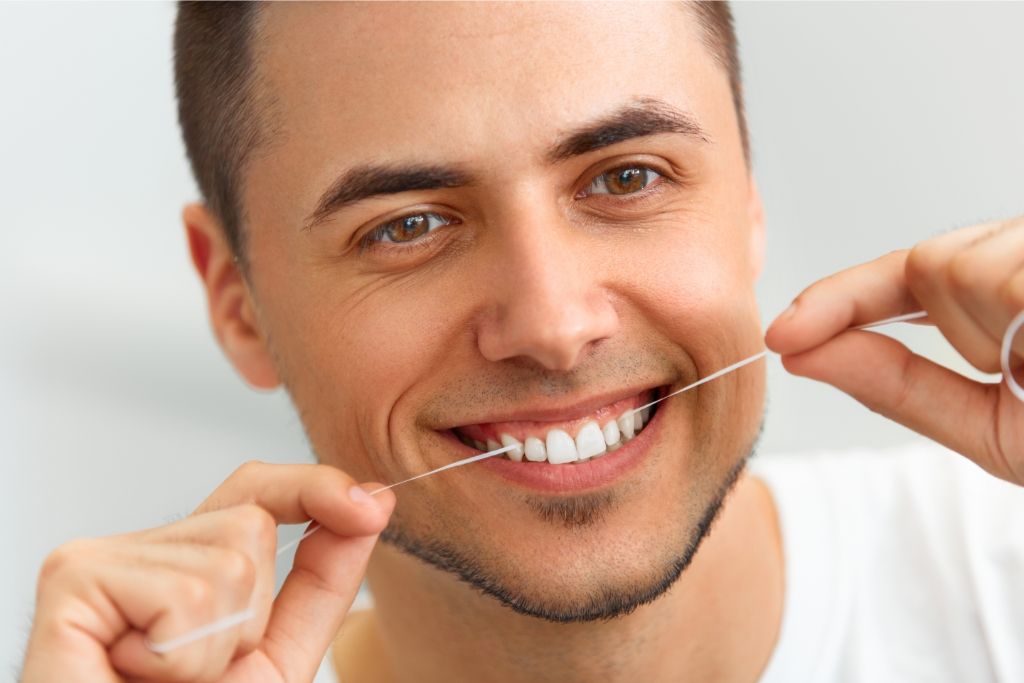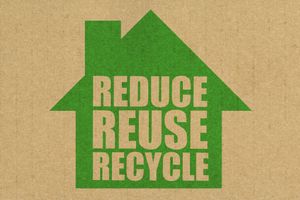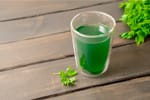Everyone wants a bright, white smile. It not only boosts your confidence but also makes you look more attractive.
However, with the consumption of coffee, tea, wine, and the habit of smoking, our teeth tend to become stained over time.
Fortunately, there are several teeth whitening methods available, ranging from DIY remedies to professional treatments.
In this article, we will share ten teeth-whitening tips to help you achieve a brighter smile.
1)) Brush Twice A Day
Brushing twice a day is crucial for a healthy smile.
Not only does it keep your teeth healthy, but it also helps prevent the buildup of stains.
Brush for at least two minutes in a circular motion, making sure to clean the outer, inner, and chewing surfaces of your teeth.
Pro-Tip: A power toothbrush combined with teeth-whitening toothpaste can be an effective way to brighten up a person's smile.
A quality power toothbrush has features like oscillation and rotation that help remove plaque and debris from the teeth more effectively than manual brushing.
Teeth-whitening toothpaste, on the other hand, contains ingredients like hydrogen peroxide and other bleaching agents that help remove surface stains and brighten the smile.
When used together, power toothbrushes and teeth-whitening toothpaste can be a great way to achieve maximum benefits for whitening the teeth.
It is important to note that while these products are effective in reducing staining on the surface of the teeth, they should not be used as a replacement for regular professional cleanings from the dentist.
Regular visits to the dentist are important to maintain good oral health and prevent more serious dental issues in the future.
2)) Floss Regularly
Flossing removes the food particles in between your teeth that your toothbrush can't reach.
Neglecting this step can lead to a buildup of plaque, which can cause discoloration and gum disease.
Essential Tips for Effective Flossing:
- Choose the Right Floss: Not all flosses are created equal. Some are made to glide easily between teeth, while others are designed to scrub away plaque. Choose a dental floss that best suits your teeth and gums. For instance, if you have tight spaces between your teeth, a thinner, waxed floss might be a good option.
- Proper Flossing Technique: Hold the floss tautly between your thumbs and index fingers. Slide it gently up and down between your teeth. Curve the floss around the base of each tooth, making sure you go beneath the gumline. Do not force the floss or snap it into place, as this can damage your gums.
- Floss at the Right Time: Optimally, we should floss after every meal, but that can be impractical. Therefore, make a habit of flossing at least once a day, preferably before going to bed, to remove the day's buildup of plaque and food particles.
Regular flossing is a simple yet crucial step towards maintaining a brighter smile.
It helps to remove the hidden food particles and plaque that contribute to staining and gum disease.
Incorporating the right floss and proper flossing techniques into your daily routine can significantly improve your oral health and enhance the effectiveness of your teeth-whitening efforts.
A brighter smile is not just about aesthetics; it's also a reflection of good oral health.
3)) Use Whitening Toothpaste
There are various types of toothpaste, but not all of them are created equal.
Look for toothpaste that contains whitening agents like hydrogen peroxide and baking soda.
The ingredients in whitening toothpaste can help remove surface stains.
Alternatively, you can use activated charcoal toothpaste, which binds to stains and helps remove them from the surface of your teeth.
You can use activated charcoal toothpaste or mix it with water to make a paste and brush your teeth with it for 2-3 minutes.
4)) Eat A Healthy Diet
What you put in your mouth can affect the color of your teeth. Avoid sugary beverages and foods that can erode tooth enamel. Instead, opt for a diet rich in fruits, vegetables, and lean proteins.
Essential Tips for Maintaining a Teeth-Friendly Diet:
- Incorporate Calcium-rich Foods: Consuming foods high in calcium, such as cheese, almonds, and leafy greens can help strengthen your teeth' enamel, keeping them healthy and less susceptible to discoloration.
- Eat Crunchy Fruits and Vegetables: Crunchy fruits and vegetables like apples, carrots, and celery can act as natural toothbrushes. They are not only healthy but also help scrape off plaque and food particles from the surface of your teeth.
- Avoid Staining Foods and Beverages: Certain foods and beverages like coffee, tea, wine, and dark berries can stain your teeth. If you consume them, make sure to brush your teeth soon after or rinse your mouth with water to minimize their staining effect.
Adopting a teeth-friendly diet is a natural and efficient way to promote a brighter, healthier smile.
It not only helps maintain oral health but also enhances overall well-being. The incorporation of calcium-rich foods and crunchy fruits and vegetables, along with minimizing the intake of staining foods, can significantly improve the aesthetic and health of your teeth.
A balanced diet is not only beneficial for your body but also plays a pivotal role in sustaining oral hygiene and enhancing the whiteness of your teeth.
5)) Rinse After Eating Or Drinking
Drinking dark beverages such as coffee, tea, or red wine can stain your teeth. Rinsing your mouth with water after consuming these drinks can help reduce the staining effects.
Essential Tips for Effective Rinsing:
- Rinse with Water: Simply rinsing your mouth with water after meals or drinks can help wash away food particles and minimize staining. Make it a habit to swish water around in your mouth for 30 seconds post-meal, especially after consuming dark-colored or acidic foods and drinks.
- Use a Mouthwash: Consider using a mouthwash after meals. Choose a mouthwash that strengthens enamel and has antibacterial properties. This not only freshens your breath and helps to prevent tooth decay but also aids in removing any potential staining substances.
- Wait Before Brushing: It is important to note that brushing your teeth immediately after eating or drinking can actually harm your teeth, especially if you've consumed something acidic. Acid can soften enamel, and brushing can wear it away. Instead, wait at least 30 minutes after eating or drinking to brush your teeth.
Rinsing after eating or drinking is a simple yet effective strategy to maintain the whiteness of your teeth.
Not only does it help in removing food residues and potential staining substances, but it also contributes to overall oral hygiene.
Whether it's a quick swish of water after a meal, the use of a mouthwash, or brushing your teeth (with a pause post meals), each step forms an integral part of your oral care routine.
A disciplined approach to rinsing can go a long way in ensuring a bright, healthy smile.
6)) Try Whitening Strips
Whitening strips are a popular DIY treatment that can help remove surface stains.
They contain a gel with peroxide that you place on your teeth for a certain period of time.
Follow the instructions carefully and be sure not to overdo it.
Essential Tips for Using Whitening Strips Effectively
- Follow Instructions: Always adhere to the manufacturer's instructions when using whitening strips. This usually involves placing the strip on your teeth for a specified duration. Overuse or leaving the strips on for too long may lead to tooth sensitivity or gum irritation.
- Consistency is Key: Regularity in the use of whitening strips is essential for obtaining the best results. Most treatments require application twice a day for two weeks. However, the frequency and duration may vary based on the product's specifications.
- Maintain Oral Hygiene: For optimal results, maintain good oral hygiene habits. Brush and floss your teeth regularly and rinse your mouth after meals. This will prevent new stains from forming and will enhance the effectiveness of the whitening strips.
Using whitening strips can be an effective way to enhance the brightness of your smile right at home.
By following the instructions carefully, maintaining consistency in their use, and upholding good oral hygiene, you can maximize the results and enjoy a whiter, brighter set of teeth.
Everyone's teeth respond differently to whitening, so the results may vary. But with regular use and proper oral care, whitening strips can undoubtedly contribute to a more confident smile.
7)) Use Baking Soda
Baking soda is a natural cleaning agent that's been used for centuries.
Mix a small amount with water to create a paste and use it to brush your teeth once a week.
The gentle abrasiveness can help remove tough stains.
Alternatively, you can use baking soda toothpaste formulated specifically to help whiten teeth.
8)) Get A Professional Cleaning
Professional teeth cleanings can remove stubborn stains that at-home methods can't. Your dentist can also recommend a whitening treatment tailored to your needs.
Key Considerations for a Professional Dental Cleaning:
- Regular Appointments: To maintain the health and brightness of your teeth, schedule regular dental cleanings. Most dental professionals recommend having a professional cleaning every six months.
- Post-Cleaning Care: After a professional cleaning, continue with good oral hygiene habits at home. This includes brushing twice a day, flossing daily, and rinsing with a mouthwash to keep your teeth clean and white.
- Discuss Whitening Options: During your visit, talk to your dentist about professional teeth whitening options. These treatments are typically more effective than at-home methods and can provide you with a noticeably brighter smile.
Opting for a professional teeth cleaning is an integral part of maintaining oral health and enhancing the aesthetic appeal of your smile.
By scheduling regular appointments, maintaining good oral hygiene post-cleaning, and discussing professional teeth whitening options with your dentist, you can achieve and sustain a bright, healthy smile.
Professional cleaning does more than just enhance appearance—it also plays a vital role in preventing oral diseases and ensuring overall health.
9)) Try Oil Pulling
Oil pulling is an ancient method that involves swishing oil around your mouth to remove toxins and improve oral health.
Coconut oil is a popular choice due to its antibacterial properties.
Swish the oil in your mouth for 15-20 minutes daily, then spit it out and rinse your mouth with water.
Guidelines for Effective Oil Pulling:
- Choose the Right Oil: While coconut oil is frequently recommended due to its antimicrobial properties, you can also use sesame or sunflower oil. Make sure to select a high-quality, organic oil for this process.
- Timing Matters: Ideally, oil pulling should be done in the morning, before eating or drinking anything. Swish for about 15-20 minutes, ensuring the oil reaches all parts of your mouth.
- Don't Swallow: It's important not to swallow the oil as it collects bacteria from your mouth during the process. After swishing, spit the oil into a trash can (not the sink) to avoid potential plumbing issues.
Oil pulling is a traditional practice with potential benefits for oral health, including teeth whitening.
By choosing the right oil, practicing it first thing in the morning, and ensuring not swallow, you can make the most of this technique.
It's crucial to remember that oil pulling is a supplemental practice and should not replace regular oral hygiene routines.
It is an easy and cost-effective method that can contribute to a brighter and healthier smile when used in conjunction with regular brushing and flossing.
10)) Avoid Tobacco Products
Smoking and chewing tobacco products can cause deep stains that are difficult to remove. Quitting tobacco use can improve the color of your teeth and benefit your overall health.
Strategies to Help You Avoid Tobacco Products:
- Seek Professional Help: Consider seeking medical advice or joining a support group. Professionals can provide you with strategies and resources to help you quit effectively.
- Find Healthy Alternatives: Whenever you feel the urge to smoke or use tobacco, try to engage in a healthier activity instead. This could be chewing gum, sipping water, or taking a short walk.
- Create a Support System: Inform your friends and family about your decision to quit. Their encouragement and support can be invaluable during the difficult times of your journey.
Eliminating tobacco use is not only beneficial for overall health, but it's also one of the most effective ways to prevent teeth discoloration.
By seeking professional guidance, engaging in healthy alternative activities, and establishing a robust support system, one can successfully quit tobacco and simultaneously enhance their oral health.
A brighter smile is an added incentive to the numerous health benefits of being tobacco-free.
Conclusion
Maintaining a bright and healthy smile involves both professional dental care and good oral hygiene practices at home.
Whether it's opting for regular professional cleanings, trying traditional methods like oil pulling, or making lifestyle changes like avoiding tobacco, each step contributes significantly to your dental health.
Consistency is key—maintaining these habits over the long term will deliver the best results.
With the right approach, you can enjoy the confidence that comes with a sparkling, healthy smile.
Related Articles and Guides
- 10 Proven Dental Health Tips For A Healthy Smile
- How To Whiten Yellow Teeth Safely For A Beautiful Smile
- How To Get Rid Of Plaque On Teeth Before It Turns Into Tartar
- How To Get Rid Of Teeth Tartar
- How To Get Rid Of Calcification On Teeth
- How To Get Rid Of Brown Spots On Teeth
- How To Get Rid Of Coffee Stains On Teeth
- How To Get Rid Of Tea Stains On Teeth
- How To Get Rid Of Tobacco Stains On Teeth
- How To Get Rid Of Teeth Sensitivity
Download Our Free E-book!







